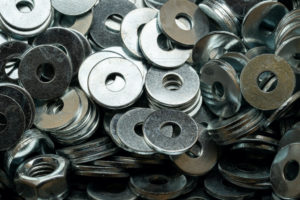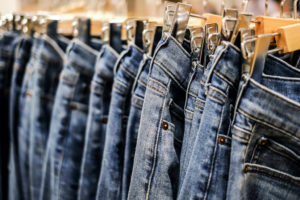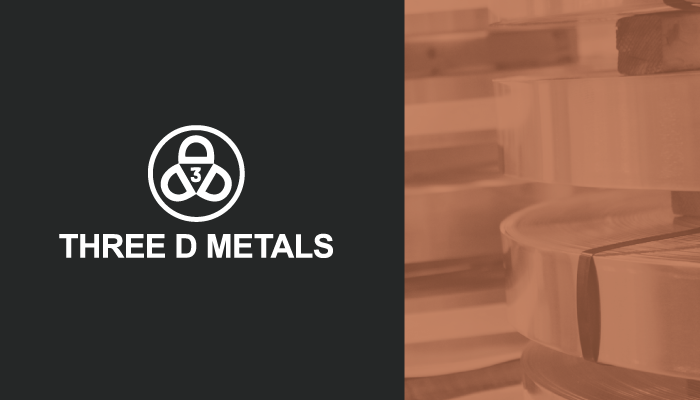You interact with high carbon steel on a daily basis, though you may not even realize it.
From tiny washers to pant hangers and more, this versatile material is valued for its “memory”, allowing it to be formed into various shapes such as circles, coils, and springs.
Like all steels, high carbon steel is an alloy, meaning it contains a mixture of metals, including iron. High carbon steel is the name given to any steel with 0.6% or higher carbon content.
High Carbon Steel Properties
The amount of carbon in steel directly affects the material’s properties.
The high percentage of carbon in high carbon steel gives it lots of strength and resistance. High carbon steel is harder to shape than low carbon steel but is moderately ductile, meaning it can still be deformed without breaking.
This type of carbon steel, in particular, has “memory,” which means once the material is stretched, it will expand back into the shape it was formed in.
What is High Carbon Steel Used For?
High carbon steel is used everywhere, whether in plain sight (those metal clips on a pant hanger) or hidden behind your refrigerator door.
It’s a popular choice for washers and fasteners, but the material is also used in a variety of industries. Here are a couple of common end-use applications:
Household Toys & Appliances
In the past, screws were used on the front of your refrigerator door, but now there are fasteners made of high carbon steel in the back to hold it in place. You’ll also find steel fasteners within dishwashers, freezers, and televisions. Like the refrigerator, steel fasteners hold the T.V. face on so you don’t see any screws or trim clips.
Head to your local home and garden store, and you’ll find high carbon steel washers and pipe hangers for almost any application. From toy wagons and cars to golf carts and lawn and garden equipment, you can look closely and see valve covers, gaskets, and fasteners — all manufactured from high carbon steel.

Automotive
High carbon steel’s high strength, resistance, and durability make it a popular choice for vehicle components. Frames, chassis, support beans, mufflers, and more can be made from high carbon steel.
One common use in the automotive industry is clamps for fuel rail systems. The clamps hold the fuel rail onto an engine block, down the body fluid transfer clamps.
If you use a car radio and happen to pop off your radio bezel, you will see six or seven high carbon steel metal clips holding it in place. You’ll also find copper and high carbon steel in terminals for electrical connections.
And that backup sensor on your car? There will be a small, high carbon steel clip holding it in place — same with your side bumpers to aid in the park assist features.
Manufacturing & Construction
High carbon steel is used for a variety of cutting tools, springs, and coils for the manufacturing industry, as well as various washers and fasteners.
During the COVID-19 pandemic, one Three D Metals customer used our high carbon steel to form small washers for use in their COVID testing medical machines.
“The plastic ones they were getting from offshore were not holding up, so they switched to a metal one,” said Three D Metals’ Director of National Accounts Chad Castrigano.
Related: The Benefits of Using Carbon Steel in Construction
Retail
Next time you’re on a trip to your local store (or maybe even in your own home), check out a pant hanger. Those squeeze tabs holding the plants on the hanger are high carbon steel.
Or, stop in at a gas station and check out the chip selection.
“The chips may be hanging around a metal rod, and there’s a metal clip. You pull the bag off, and that metal clip snaps back on — that’s a very good visual of what high carbon steel does,” Castrigano shared.

Best Uses for High Carbon, Low Carbon, and Stainless Steel
Steel is a widely used material, and there are a few different variants. The end-use application may determine the type of steel you choose for your product.
High Carbon Steel
To summarize, high carbon steel’s properties make it a great choice for household toys and appliances, automotive, manufacturing, construction, and retail applications where strength and resistance are important.
Low Carbon Steel
Low carbon steel is commonly used in construction for applications that don’t need a lot of push-on, pull-off force, such as something to hang materials off of. Other uses may be nails, pipes, wires, or other applications that require weldability.
Stainless Steel
Stainless is commonly chosen for its aesthetic appeal, so it’s used for visual applications. It also has rust-resistant properties and can be submerged in water over time.
| High Carbon vs. Low Carbon vs. Stainless Steel | ||
| High carbon steel | Low carbon steel | Stainless steel |
| Carbon content: 0.6% – 1% | Carbon content: less than 0.2% | Carbon content: 0.03%-1.2% |
| More brittle | Less brittle | Brittleness varies by grade |
| Moderate ductility | Low ductility | Ductility varies by grade |
| Uses: Household toys and appliances, automotive, manufacturing, and construction, retail | Uses: automotive, building and construction, machinery and tools, cutlery and cookware | Uses: cutlery and cookware, household appliances, building and construction, chemicals and pharmaceuticals |
Heat Treat, Pancake, and Oscillate
When researching high carbon steel, you may read terms like “heat treat” or “pancake” or “oscillate” — but what do they mean? Here’s a breakdown:
Heat Treat/Annealed:
High carbon steel can be heat-treated after it is formed into some sort of shape. At Three D Metals, our product is available in a variety of tempers of high carbon, low carbon, and stainless steel. Our material is not heat-treated, although customers may choose this treatment after bending, shaping, and forming our material.
Pancake:
Pancake coils are so named because they’re shipped “eye to the sky.” The pancake feature may be used when you’re running a lower-volume job.
Not sure if pancake coils are a good fit for your project? Contact our experts, and we can help guide you through the options.
Oscillate:
Oscillate-wound steel is similar to a spool of thread, where you can get the same circumference as a pancake but with more material. When the steel is slit, it oscillates back and forth, with each strip on top of the other. This feature would be ideal for someone who needs fewer coil changeovers.
Castrigano gave the example of one Three D Metals customer who creates drop ceilings. The white ceiling material is held from two clips the customer has created from Three D Metals steel, bent and shaped to the form they need.
“They get 5,000 pounds of coil that has 25.6 miles of material,” he said. “To get that much material would require hundreds of pancake coils.”
Knowing the amount of material you need will help determine the size and shape of the shipped product. Not sure where to start? Our metal calculator will help you get an accurate estimate.
Here to Meet Your Steel Product Needs
At Three D Metals, we are the largest distributor of high carbon spring steel coil in North America and also stock several ranges of low carbon and stainless steels in various alloys. We meet European and Asian steel standards from C45 up to C75 grade steel. And, we also offer oscillating, slitting, and cutting services.
If you’re unsure what material would work best for your end-use, start by requesting a quote. We may ask you:
- Do you know what the application will be?
- Is it going to be used in an engine?
- Is it going to be used internally?
- Will the metal need to look a certain way?
At Three D Metals, our team of knowledgeable account managers prides themselves on finding solutions to our customers’ needs and providing stand-out customer service along the way. We’re always available to answer any questions you may have.

